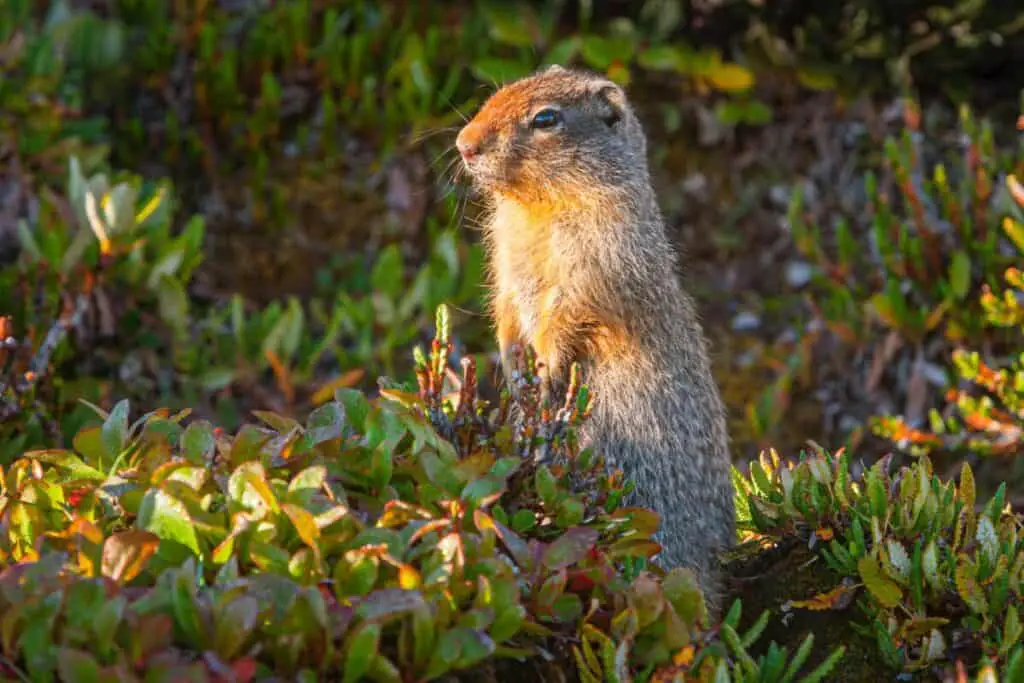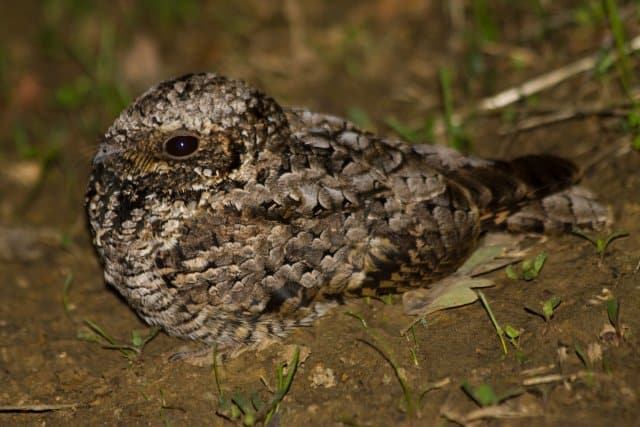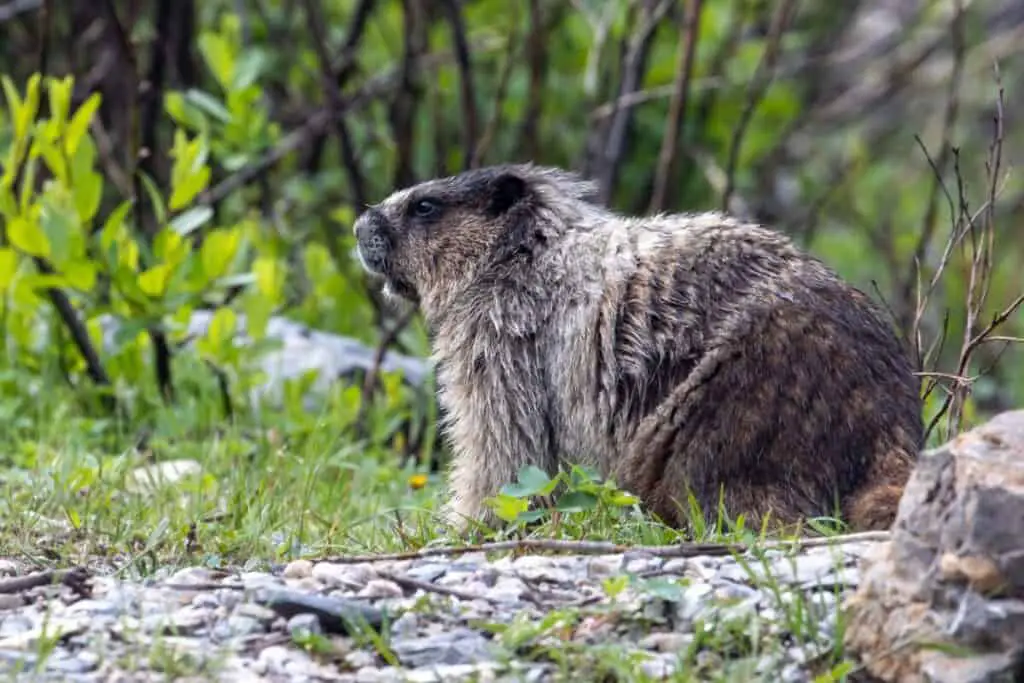Hibernation is one of the great mysteries of the animal kingdom. How can animals survive such long periods without eating? As a biologist, I’ve researched this topic thoroughly and have prepared this article to provide you with some key insights into this fascinating adaptation.
Animals hibernate to reduce their energy needs when necessary, by decreasing their metabolic rate, lowering their body temperature, and reducing their heart rate and breathing rate. Bears are not true hibernators; they are considered light sleep hibernators and can wake up and move around.
True hibernators appear to stay alive by having barely enough blood and oxygen moving around in their bodies. A few species can survive being frozen solid, including the Arctic ground squirrel. Some hibernators need to rest up after awakening, often sleeping for days afterwards!
A common definition for hibernation is a long-term state in which body temperature is significantly decreased, metabolism slows drastically, and the animal enters a comalike condition that takes some time to recover from.
Hibernation is More Common than You Might Think
Hibernation is a regular survival strategy in over 200 species that we know of. For many years, experts believed hibernation occurred only in polar and temperate environments. More recently, people have discovered that animals can hibernate in all sorts of environments, including arid deserts and tropical rainforests, as a way of reducing their energy needs.
Hibernation allows animals to conserve energy when there isn’t enough food or water available to maintain activity levels necessary to successfully hunt, forage, or avoid predators. They do this by decreasing their metabolic rate and lowering their body temperature. Hibernation can last for days, weeks, or months – depending on the species, the time of year, ambient temperature range, and the animal’s overall health.
How Much Energy Can Animals Save in Hibernation?
The reduction in activity along with the low metabolic rate reduces energy requirements during the hibernation season by up to 95%. During dormancy, rodents typically use about 15 percent of the energy used during normal activity.
The behaviors necessary for hibernation, like going for weeks without sleep, or dropping to near-freezing body temperatures would be potentially fatal to non-hibernating species like us.
Is There a Difference between True Hibernators and Light Sleepers?
True hibernators
True hibernators have a period of torpor during which their metabolism drops to just 5 percent its normal rate. Their body temperature drops and heart and breathing rates are just a fraction of what they are during their active periods. Numerous small mammals are true hibernators, including skunks, chipmunks, hedgehogs, squirrels, mice, and bats.
Most true hibernators don’t need to urinate or have a bowel movement, since the urea is broken into amino acids and the waste is reabsorbed back into the body. Similarly, they don’t get dehydrated because they absorb sufficient moisture from stored fat.

Groundhogs provide a good example of what it takes to survive as a true hibernator. During hibernation, the groundhog’s body temperature drops from 37’C (99’F) to as low as 5’C (33’F). The heart rate plummets from about 80 beats per minute to 5, and the breathing rate goes from 16 breaths a minute to as few as 2.

There’s also one bird known to be a true hibernator, the Common Poorwill.
The Common Poorwill finds a spot under rotten logs or rocky hollows and stays there for up to five months. Its daily energy needs drop by 93% and it can live up to 100 days on 10 grams of stored body fat. Once hibernation is over, the poorwill takes about seven hours to regain its normal body temperature.
Light sleep hibernators
Some animals are considered light sleep hibernators rather than true hibernators. Since they are in a lighter state of hibernation, they can be easily awakened, and the period of inactivity does not last as long.

When we think of animals that hibernate we often think of bears, especially black bears and brown (grizzly) bears. Surprisingly, bears are not true hibernators. They are considered light sleep hibernators, which also includes opossums, raccoons, and skunks.
Bears don’t urinate or defecate during the entire hibernation season, but they do wake up and move around, and mother bears give birth and lactate.
We’re learning a great deal from bears! See the video at the end of this article.
Is Hibernation the Same as a Deep Sleep?
We often think of hibernation as a period of deep sleep, but that’s not the case. Hibernation is more of a suspended animation rather than a deep sleep. The amount of brain activity is one key difference.
When sleeping, the brain is resting for a large part of the time. Body temperature, breathing, and heart rates vary but not to a great degree.
During hibernation, the brain does not rest; the brain waves resemble those of an animal that is awake, though somewhat suppressed.
Strange but True: Oddly enough, animals that come out of true hibernation show signs of sleep deprivation and need to rest up, often sleeping for days afterwards!
Basic Physiology of True Hibernation
Once an animal is hibernating, the heartbeats usually slow down drastically – to as little as 1 to 3% of the animals’ normal heartrate. The dwarf lemur’s heartrate, for example, drops from its normal range of 180 beats per minute down to roughly 4 bpm. Breathing also declines dramatically; to just one breath every 10 to 21 minutes.
Something worth noting: the hearts of hibernating mammals continue to function at temperatures close to freezing. In deep hibernation, heart rates become regular and slow. Conversely, the heartbeats of non-hibernating mammals become irregular and the heart will cease to function when body temperatures drop below 15°C.
Hibernating animals appear to stay alive by having just enough blood and oxygen moving around their bodies.
How do Hibernators Store Enough Energy?
Before entering hibernation, animals need to store enough energy to last through the entire period. Larger species, such as bears, store energy reserves in fat deposits by eating large amounts of food in preparation for hibernation. Some smaller species store energy by caching their food instead of building up fat reserves.
There are basically two energy storage strategies: internal and external.
Internal Food Storers
Internal food storers lay down a supply of fat within their bodies. These include dormice, flying squirrels, marmots, ground squirrels, prairie dogs, jumping mice, and birch mice. When their winter supplies are stored internally, they are safe and cannot be stolen.
The fat-tailed dwarf lemur prepares for its long dormancy by gorging on food and storing most of its fat reserves in its tail, doubling its body weight.
On a personal note, while in the Canadian Rockies we observed a grizzly bear settle down for weeks in the autumn to take advantage of an incredibly rich energy source – a dead horse. We watched the grizzly feed on the horse over a period of about six weeks and estimated that it must have gained at least two or three hundred pounds! (the common refrain “I’m so hungry I could eat a horse!” may not be so farfetched when it comes to grizzlies).
External Food Storers
The external food storers usually stock large amounts of dried grass, seeds, nuts, and berries within their burrows. These include hamsters, chipmunks, some ground squirrels, kangaroo mice and rats, pocket mice, and some dormice.
Some rodents don’t take any chances: they lay down fat reserves in preparation for dormancy, as well as storing foods since they awaken regularly.
Two Animals that Can Freeze Solid and Survive
The Arctic ground squirrel is one of the very few animals that can survive being frozen alive.
Native to the North American tundra and northern Russia, this animal burrows into the permafrost and slips into a state of suspended animation, its body temperature plummeting below freezing to a frigid -2.9 degrees Celsius (27’F).

Tree frogs are another group of fascinating creatures that can survive being frozen alive.
Many tree frogs, like the Gray Tree Frog, hibernate under dead leaves or tree bark, and are exposed to freezing temperatures. When tree frogs become frozen, their hearts and other body functions appear to stop completely!

In this condition, the frog no longer breathes, no blood flows and there is no heartbeat. Doesn’t this sound like an animal that is dead and gone? Yet, upon the arrival of spring, treefrogs almost miraculously thaw out and hop away!
Most animals cannot survive being frozen like this, since ice crystals severely damage the cells and usually cause death. Tree frogs have a natural form of antifreeze as a defense mechanism – a high concentration of glucose in the frog’s vital organs prevents freezing.
How is Hibernation Controlled by Genes?
How are these animals able to accomplish these remarkable physiological changes? Researchers are finding answers in the genomes of animals that hibernate, and they’ve discovered that hibernation is controlled by specific genes. These genes turn-on or off at appropriate times throughout the year, fine-tuning the hibernator’s physiology and behavior. For example, genes that control fat metabolism turn on when animals such as ground squirrels and bears need to use their fat stores as fuel to survive long periods of fasting.
Interestingly, genes such as these are present in all mammals including humans. When it comes to our anxieties and obsessions regarding body weight, isn’t it interesting to consider that we have genes that control fat metabolism? How do you switch them on or off? That’s what I’d like to know!
Is there a link between Hibernation and Long Lifespan?
It appears that hibernators can potentially “suspend” aging!
Smaller animals typically have higher metabolic rates but shorter lifespans. But it appears that this does not hold true for hibernating species. There are good examples of long lifespans among various mammals that can enter hibernation, such as bats, ground squirrels, lemurs, and marmots.

Recent studies have shown that many hibernators live well past their expected lifespan as predicted from body size or metabolic rate. Bats in particular exhibit extreme lifespans of 38–41 years, 9.8 times longer than expected based on their body size. Some other relatively long-lived hibernators include ground squirrels (~7 years), marmots (~20 years), and mouse lemurs (8–14 years).
Some studies have shown that animals that spend a higher portion of their life in hibernation have greater lifespans. This evidence suggests that there is a link between hibernation and longevity, and it is conceivable that the mechanisms that hibernators employ to survive during torpor could be linked to mechanisms that delay aging.
What is Brumation?
Most Cold-Blooded Animals Don’t Hibernate… They Brumate
Brumation is specific to reptiles and amphibians that enter a state of dormancy, showing drops in metabolic rate, body temperature, heart rate, and respiratory rate.
Reptiles and amphibians are ectothermic, or cold-blooded, and they depend on their environment for thermo-regulation. If their environment is cold and they can’t warm themselves, in the sun, for example, their digestion and other biological functions slow down or even stop completely.
Brumating reptiles and amphibians need to drink water, and sometimes they even eat and defecate, although these activities are drastically reduced compared to normal. True hibernators, as we’ve seen, don’t wake up during dormancy, and they don’t urinate, defecate, eat, or drink.
Another big difference between animals that hibernate and animals that brumate is food consumption. Hibernating animals typically eat beforehand to build fat reserves that last through the hibernation period. Brumating animals stop eating before dormancy as their metabolic rate drops so low that they are unable to fully digest food until outside temperatures increase.
Brumating animals are very responsive to temperature, even while dormant.
Cold-blooded animals can move on warmer winter days even when brumating, unlike hibernators that stay relatively immobile while in a deep state of torpor.
Do Turtles Brumate or Hibernate?
Turtles are Special!
Interestingly, most turtles don’t brumate OR hibernate! While they have an extremely low metabolism during the cold season, they remain alert.
At times in the winter, you can even see turtles moving around under the ice of frozen lakes and ponds. Turtles can spend month after month buried in the mud or sitting on top of the mud, barely breathing and with their hearts barely beating. In the spring, they watch for changes in light and temperature and emerge again once environmental conditions allow.
How can turtles survive the winter without breathing?
Remember – turtles are reptiles and, even though they live in the water, they need air to breath. So, one of the big questions is: how do turtles survive the winter without breathing?
Well, here’s another neat adaptation! Turtles that spend the winter “stuck in the mud” have specially adapted skin around their throats and mouths that is very efficient at absorbing oxygen from the cold water. And they don’t have to eat during dormancy because they absorb sufficient energy from their body tissues. Even their shells are adapted for neutralizing the resulting lactic acid build-up.
North American painted turtles are so well adapted that they can stay submerged in cold water for as long as 3 months with zero blood oxygen.
Can Humans Hibernate?
Humans would suffer irreversible brain damage if the oxygen supply was cut off for more than 4 or 5 minutes. Even for humans, however, this period can be extended under very cold temperatures.
In 1986, two-and-a-half year old Michelle Funk fell into an icy stream in Utah and was submerged for about 45 minutes. She was technically dead without a pulse when rescued. Fortunately, the frigid water had chilled her body to 19 C (66 F) and her metabolism had drastically slowed. Amazingly, she showed no signs of brain trauma when she emerged from a coma two weeks later.
Doctors at the time of the accident attributed Michelle’s improbable survival to an “ancient hibernation reflex that humans have all but lost.” She was profoundly hypothermic when taken to the hospital and her body functions had slowed to the point that her brain and other organs had entered a state of suspension (Fraizer 2018).
At the time, 45 minutes represented the longest period anyone had ever recovered from lack of oxygen with their brain intact, extending the record of the day by 21 minutes.
What Can Humans Learn from Hibernators?
Bears have evolved to successfully spend several months in light hibernation. Their unique physiology provides great potential for researching and developing treatments for a range of human ailments, from obesity, diabetes… to kidney and heart disease.
It seems that bears have naturally solved some of humanity’s most pressing health problems… just by being bears!
For example, at Washington State University the Bear Center is researching how a bear can survive with a very low heart rate for an extended period of time. A bear’s heart rate goes from 80-90 beats per minute when active, to 15-18 beats per minute during hibernation.
According to said Dr. Lynne Nelson, associate professor of Cardiology, “Humans or other animals could not do what the bears do in hibernation without developing heart failure.”
Watch this video to learn more about this fascinating research.
References
Jastroch, M., Giroud, S., Barrett, P., Geiser, F., Heldmaier, G. and Herwig, A., 2016. Seasonal control of mammalian energy balance: recent advances in the understanding of daily torpor and hibernation. Journal of Neuroendocrinology, 28(11).
Ken Storey Lab Carleton University in Ottawa, Canada – wealth of information on hibernation and adaptations to cold
Faherty, Sheena. TED Talk. What’s the Difference Between Hibernation and Sleep?
Fraizer, Audrey (2018). Spirit to Survive. Journal of Emergency Dispatch. https://www.iaedjournal.org/spirit-to-survive
Wu, C.W. and Storey, K.B., 2016. Life in the cold: links between mammalian hibernation and longevity. Biomolecular Concepts, 7(1), pp.41-52.

Check Out Our TOP Articles for Even More Fascinating Creatures
- How do Octopus Reproduce? (Cannibalistic Sex, Detachable Penis)
- Do Jellyfish have Brains? How Can they Hunt without Brains?
- Why are Deep Sea Fish So Weird and Ugly? Warning: Scary Pictures!
- Are Komodo Dragons Dangerous? Where Can you See Them?
- Koala Brains – Why Being Dumb Can Be Smart (Natural Selection)
- Why do Lions Have Manes? (Do Dark Manes Mean More Sex?)
- How Do Lions Communicate? (Why Do Lions Roar?)
- How Dangerous are Stonefish? Can You Die if You Step on One?
- What Do Animals Do When They Hibernate? How do they Survive?
- Leaf Cutter Ants – Surprising Facts and Adaptations; Pictures and Videos
- Irukandji Jellyfish Facts and Adaptations; Can They Kill You? Are they spreading?
- How to See MORE Wildlife in the Amazon: 10 Practical Tips
- Is it Safe to go on Safari with Africa’s Top Predators and Most Dangerous Animals?
- What to Do if You Encounter a Bullet Ant? World’s Most Painful Stinging Insect!
- How Do Anglerfish Mate? Endless Sex or Die Trying!
- How Smart are Crocodiles? Can They Cooperate, Communicate…Use Tools?
- How Can We Save Our Oceans? With Marine Sanctuaries!
- Why Are Male Birds More Colorful? Ins and Outs of Sexual Selection Made Easy!
- Why is the Cassowary the Most Dangerous Bird in the World? 10 Facts
- How Do African Elephants Create Their Own Habitat?
- What is Killing Our Resident Orcas? Endangered Killer Whales
- Why are Animals of the Galapagos Islands Unique?
- Where Can You See Wild Lemurs in Madagascar? One of the Best Places
- Where Can You see Lyrebirds in the Wild? the Blue Mountains, Australia
- Keeping Mason Bees as Pets
- Why do Flamingos have Bent Beaks and Feed Upside Down?
- Why are Hippos Dangerous? Why Do They Kill People?


